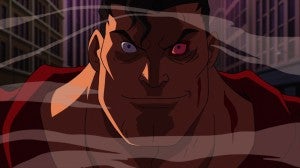Like every other comic book fan with a pulse in early 2001, I loved Joe Kelly, Doug Mahnke and Lee Bermejo’s classic Superman tale “What’s So Funny About Truth, Justice and the American Way?”. It was a rumination on what makes Superman special that’s been paralleled only once or twice before, and a chance for the writers of DC’s longest-standing icon to stand their hero up against the likes of The Authority/Stormwatch, who essentially argued that the traditional model of superheroes–the reactive model that Superman represents–should be a thing of the past, replaced by proactive “crime fighters” less concerned with justice than results.In a single, oversized issue, Kelly introduced and resolved the conflict, with Mahnke and Bermejo providing some impressive and haunting visuals along the way. It’s no wonder it’s widely regarded as one of the great Superman stories since the Crisis on Infinite Earths. And coming, as it did, in the middle of a period where Superman and Action Comics weren’t impressing much of anyone, the indisputable success of the issue carried even more weight.So when Kelly and his Man of Action friends were tapped to adapt the story into a 70-minute, PG-13-rated feature film for Warner Premier’s direct-to-video/video-on-demand DC Universe series, I was as excited as anybody else. Now that I’ve seen Superman vs. The Elite, though, I have to admit that it might be a bit too much of a good thing.While the third act of the story–wherein Superman actually deals with the problem of The Elite–is as strong as anything we’ve seen from DC’s animated feature line, there seems to be an awful lot of padding in the film. It’s not surprising when you consider that even an oversized comic book is still only about sixty (comic book) pages, and not likely to fill a feature film, even if the “feature length” part is a paltry 74 minutes.












